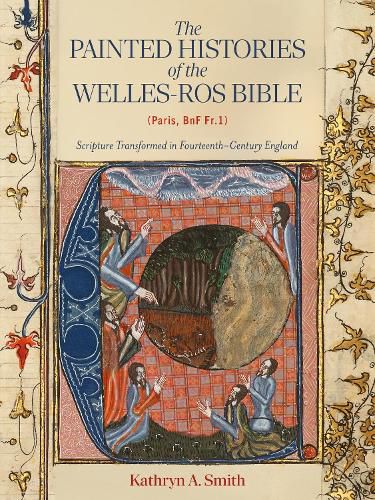Readings Newsletter
Become a Readings Member to make your shopping experience even easier.
Sign in or sign up for free!
You’re not far away from qualifying for FREE standard shipping within Australia
You’ve qualified for FREE standard shipping within Australia
The cart is loading…






A lavishly illustrated study of the Welles-Ros Bible, exploring its provenance, ownership, design and production.
At some point between c.1366 and 1373, the noblewoman Maud de Ros, widow of the Lincolnshire baron John de Welles, commissioned what is now the earliest surviving entire translated Bible from England. The Welles-Ros Bible contains the most complete edition of the Anglo-Norman Bible - a close, often literal translation of the Vulgate into insular French - as well as 82 narrative, highly personalized illustrations.
As this first long-form study of the manuscript argues, Maud commissioned the Bible to serve as a mirror, guide, family archive, dynastic chronicle, and source of spiritual instruction and consolation for her youthful son, John, 5th Baron Welles (1352-1421). Moreover, Maud played a key role in the production of the text edition and the design of many of the images. This book analyzes the manuscript, its text, and its vivid illuminations in the context of rich traditions of medieval biblical translation, production, and illustration, offering fresh insights into the roles of images in shaping and mediating scripture and religious experience. Adding to our understandings of life among the lower nobility in later fourteenth-century England, this cultural history of a major artefact also expands our picture of the cultural patronage and creative agency of laywomen, as well as medieval strategies of memorialization, responses to the Plague, and ideas about gender, identity, sexuality and the emotions.
$9.00 standard shipping within Australia
FREE standard shipping within Australia for orders over $100.00
Express & International shipping calculated at checkout
A lavishly illustrated study of the Welles-Ros Bible, exploring its provenance, ownership, design and production.
At some point between c.1366 and 1373, the noblewoman Maud de Ros, widow of the Lincolnshire baron John de Welles, commissioned what is now the earliest surviving entire translated Bible from England. The Welles-Ros Bible contains the most complete edition of the Anglo-Norman Bible - a close, often literal translation of the Vulgate into insular French - as well as 82 narrative, highly personalized illustrations.
As this first long-form study of the manuscript argues, Maud commissioned the Bible to serve as a mirror, guide, family archive, dynastic chronicle, and source of spiritual instruction and consolation for her youthful son, John, 5th Baron Welles (1352-1421). Moreover, Maud played a key role in the production of the text edition and the design of many of the images. This book analyzes the manuscript, its text, and its vivid illuminations in the context of rich traditions of medieval biblical translation, production, and illustration, offering fresh insights into the roles of images in shaping and mediating scripture and religious experience. Adding to our understandings of life among the lower nobility in later fourteenth-century England, this cultural history of a major artefact also expands our picture of the cultural patronage and creative agency of laywomen, as well as medieval strategies of memorialization, responses to the Plague, and ideas about gender, identity, sexuality and the emotions.